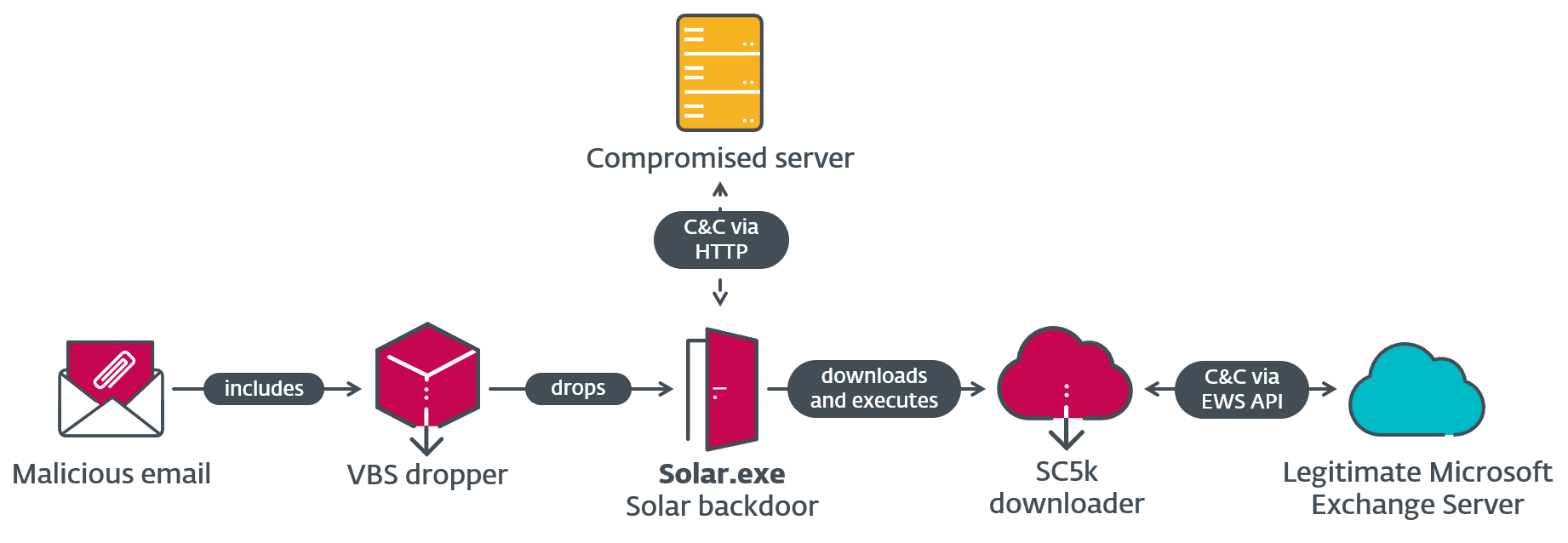
A trio of researchers break up between Italy and the UK have not too long ago published a paper about cryptographic insecurities they present in a widely-known sensible gentle bulb.
The researchers appear to have chosen their goal machine, the TP-Hyperlink Tapo L530E, on the idea that it’s “presently [the] finest vendor on Amazon Italy,” so we don’t understand how different sensible bulbs stack up, however their report has loads to show us anyway.
The researchers say that:
We dutifully contacted TP-Hyperlink by way of their Vulnerability Analysis Program (VRP), reporting all 4 vulnerabilities we discovered.
They acknowledged all of them and knowledgeable us that they began engaged on fixes each on the app and on the bulb firmware ranges, planning to launch them sooner or later.
For higher or for worse (the authors of the paper don’t say whether or not any disclosure dates have been agreed with TP-Hyperlink, so we don’t understand how lengthy the corporate has been engaged on its patches), the researchers have now revealed how their assaults work, albeit with out offering any copy-and-pastable assault code for wannabe home-hackers to take advantage of at will.
We due to this fact thought that the paper was value wanting into.
Wi-fi setup
Like many so-called “sensible” units, the Tapo L530E is designed so it may be arrange shortly and simply over Wi-Fi.
Though wireless-based configuration is widespread even for battery-powered units that may be charged and arrange by way of built-in USB ports, corresponding to cameras and bike equipment, gentle bulbs typically don’t have USB ports, not least for area and security causes, provided that they’re designed to be plugged into and left in a mains gentle socket.
By turning a Tapo L530E gentle bulb on and off repeatedly on the wall change for one second at a time, you possibly can power it into setup mode (apparently, the bulb robotically blinks thrice to inform you when it’s prepared for configuration).
Like most robotically configurable units, this causes the sensible bulb to show itself right into a Wi-Fi entry level with an easy-to-recognise community title of the shape Tapo Bulb XXXX, the place the X’s type a string of digits.
You then connect with that momentary entry level, which isn’t password protected, from an app in your smartphone.
Then you definately inform the bulb find out how to join each to your password-protected house Wi-Fi community and to your TP-Hyperlink cloud account in future, after which the bulb’s firmware can reboot and join itself as much as the web, permitting you to handle it from the app in your telephone.
The bulb can be a part of house community, which implies means you possibly can contact it instantly by way of your individual Wi-Fi if you’re at house, even when your ISP is offline on the time.
And the bulb can join over the web to your cloud account, so you may as well ship instructions to it not directly by way of your cloud account whilst you’re on the highway, for instance to show lights on and off if you happen to’re late getting again with a view to give the impression that there’s somebody at house.
Beware imposters
You’ll be able to most likely guess the place that is going.
If the app in your telephone doesn’t have any cryptographically robust means of determining that it actually has linked to a real gentle bulb if you undergo the setup course of…
…then a close-by attacker who simply occurs to start out up a pretend Tapo Bulb XXXX entry level on the proper second may lure you into sending these necessary setup secrets and techniques to their “imposter bulb” machine as a substitute of to the true factor, thus capturing each your Wi-Fi password and your TP-Hyperlink account particulars.
The excellent news is that the researchers seen that each the Tapo app and the L530E firmware included a primary security verify to assist the app and your bulbs to seek out one another retliably, thus lowering the danger that the app would blurt out your passwords when it shouldn’t.
However the dangerous information is that protocol used for this are you actually a lightweight bulb? change was clearly designed to keep away from errors reasonably than to forestall assaults.
Loosely put, the app locates any gentle bulbs on its community by broadcasting particular UDP packets to port 20002 and seeing which units reply, if any.
To assist any listening gentle bulbs resolve that an are you there? request got here from the Tapo app, reasonably than from another unknown services or products that simply occurs to make use of port 20002 as properly, the request contains what’s recognized within the jargon as a keyed hash.
The I’m right here! reply from the sunshine bulb contains the identical type of keyed checksum to assist the app filter out sudden and undesirable UDP replies.
Merely put, the keyed hash is a checksum primarily based not solely on the information within the UDP packet but additionally some extra key bytes which might be folded into the checksum as properly.
Sadly, the Tapo protocol makes use of mounted key bytes for its checksum, with the identical “key” hard-wired into the app and into the firmware of each Tapo bulb.
In different phrases, as soon as somebody has decompiled both the app, or the sunshine bulb firmware, or each, and recovered this “key”, you need to assume that anyone and everyone will know what it’s, making these are you there?/I’m right here! messages trivial to forge.
Worse, the researchers discovered that they didn’t must decompile something, as a result of this not-so-secret “key” is simply 32 bits lengthy, which implies that by setting your individual Tapo bulb into setup mode after which feeding it are you there? messages utilizing all 232 doable checksum keys, you’ll finally hit on the best key by what’s often called brute power.
That’s the cryptographic equal of spinning the dials to strive each mixture on a motorbike lock, say from 000 to 999, till you get fortunate and the lock pops open. (On common, you’ll open the lock after making an attempt half the doable combos, however it’s going to by no means take you greater than 1000 goes.)
Actually, they didn’t must ship 232 messages from the app to a lightweight bulb to crack the important thing.
By capturing only one known-genuine message with a sound keyed hash in it, they may then take a look at all doable keys offline till they produced a message that had the identical keyed hash because the one they’d saved.
Meaning the brute power assault may proceed at CPU velocity, not merely at Wi-Fi community packet velocity, and the researchers state that “in our setup, the brute power assault all the time succeeded in 140 minutes on common.”
(We’re assuming they tried it repeatedly simply to check that their cracking code was working appropriately, though with a hard-wired key shared by all Tapo bulbs, simply their first crack would have been sufficient.)
So long as you’ll communicate securely, I don’t care you who’re
The subsequent cryptographic drawback turned up within the subsequent stage of the sunshine bulb setup course of, and was the same type of mistake.
After accepting a lightweight bulb as real primarily based on a keyed-hash-that-doesn’t-actually-have-a-key, the app agrees on a session key to encrypt its site visitors with the “real” bulb…
…however as soon as once more has no means of checking whether or not the important thing settlement occurred with an actual bulb or an imposter.
Agreeing on a session secret is necessary, as a result of it ensures that nobody else on the community can eavesdrop on the Wi-Fi and Tapo passwords when they’re subsequently despatched from the Tapo app to what it thinks is a Tapo gentle bulb.
However having no verification course of for the important thing settlement itself is a bit like connecting to an internet site over HTTPS, after which not bothering to carry out even probably the most primary verify on the internet certificates that it sends again: your site visitors will probably be safe in transit, however may however be going straight into the fingers of a criminal.
The Tapo app identifies itself to the sunshine bulb (or what it thinks is a lightweight bulb) by sending it an RSA public key, which the opposite finish makes use of to encrypt a randomly generated AES key to safe the information exchanged through the session.
However the gentle bulb machine doesn’t present any type of identification, not even a checksum with a hard-wired 32-bit key, again to the Tapo app.
So, the app has no selection however to simply accept the session key with out understanding whether or not it got here from an actual gentle bulb or an imposter machine.
The mixed consequence of those two flaws is that an attacker in your community may first persuade you that their rogue entry level was a real gentle bulb ready to be configured, and thus lure you to the flawed place, after which persuade you to to ship it an encrypted copy of your individual Wi-Fi and Tapo passwords.
Mockingly, these leaked passwords actually can be safe in opposition to everybody… besides the imposter with the rogue entry level.
Quantity-used-once that’s used time and again
Sadly, there’s extra.
After we mentioned above that “these leaked passwords actually can be safe,” that wasn’t solely right.
The session key that’s established throughout the important thing settlement course of we described earlier isn’t dealt with appropriately, as a result of the programmers made a blunder of their use of AES.
When the app encrypts every request that it sends to a lightweight bulb, it makes use of an encryption mode known as AES-128-CBC.
We gained’t clarify CBC (cipher-block chaining) right here, however we’ll simply point out that CBC mode is designed in order that if you happen to encrypt the identical chunk of information greater than as soon as (corresponding to repeated requests to flip gentle on and flip gentle off, the place the uncooked knowledge within the request is similar every time), you don’t get the identical output each time.
If each gentle on and gentle off request got here out identically, then as soon as an attacker had guessed what a flip it off packet appeared like, they may not solely recognise these packets in future with out decrypting them, but additionally replay those self same packets while not having to know find out how to encrypt them within the first place.
Because it occurs, CBC-based encryption successfully depends on “seeding” the encryption course of for every chunk of information by first mixing a novel, randomly-chosen block of information into the encryption course of, thus creating a novel sequence of encrypted knowledge in the remainder of the chunk.
This “seed” knowledge is thought within the jargon an IV, brief for initialisation vector, and though it isn’t meant to be secret, it does have to be unpredictably totally different each time.
Merely put: identical key + distinctive IV = distinctive ciphertext output, however identical key + identical IV = predictable encryption.
The TP-Hyperlink coders, sadly, generated an IV on the identical time that they created their AES session key, after which used the identical IV time and again for each subsequent knowledge packet, even when earlier knowledge was repeated precisely.
That’s a cryptographic no-no.
Did I ship six packets, or solely 5?
The final cryptographic drawback that the researchers discovered is one that would nonetheless hurt safety even when the initialisation vector drawback have been mounted, particularly that outdated messages, whether or not an attacker is aware of what they imply or not, could be performed again later as in the event that they have been new.
Usually, one of these replay assault is dealt with in cryptographic protocols by some type of sequence quantity, or timestamp, or each, that’s included in every knowledge packet with a view to restrict its validity.
Just like the date on a practice ticket that gives you away if you happen to attempt to use it two days in a row, even when the ticket itself by no means will get cancelled by a ticket machine or punched by a ticket inspector, sequence numbers and timestamps in knowledge packets serve two necessary functions.
Firstly, attackers can’t document site visitors at this time and simply play it again later and probably create havoc.
Secondly, buggy code that sends requests repeatedly by mistake, for instance resulting from dropped replies or lacking community acknowledgements, can reliably be detected and managed.
What to do?
When you’re a Tapo gentle bulb consumer, hold your eyes open for firmware updates from TP-Hyperlink that deal with these points.
When you’re a programmer accountable for securing community site visitors and network-based product setups, read through the analysis paper to make sure that you haven’t made any related errors.
Bear in mind the next guidelines:
- Cryptography isn’t solely about secrecy. Encryption is only one a part of the cryptological “holy trinity” of confidentiality (encrypt it), authenticity (confirm who’s on the different finish), and integrity (be sure nobody tampered with it alongside the way in which).
- Guarantee any one-time keys or IVs are really distinctive. The associated cryptographic jargon time period nonce, brief for quantity used as soon as, is a phrase that clearly reminds you to not re-use knowledge of this kind. (Technically, IVs must bv really random, whereas nonces might observe a sample corresponding to 000..001, 000..002 and so forth, however the crucial level is that the IV have to be initialised every time you encrypt a brand new chunk of information, not merely if you initialise the important thing on the very begin.)
- Defend in opposition to replay assaults. It is a particular side of guaranteeing the authenticity and integrity we talked about above. An attacker shouldn’t be capable of seize a request you’re making now and blindly replay it later with out getting noticed. Keep in mind that an attacker doesn’t want to have the ability to perceive a message if they’ll replay it and probably create havoc.





